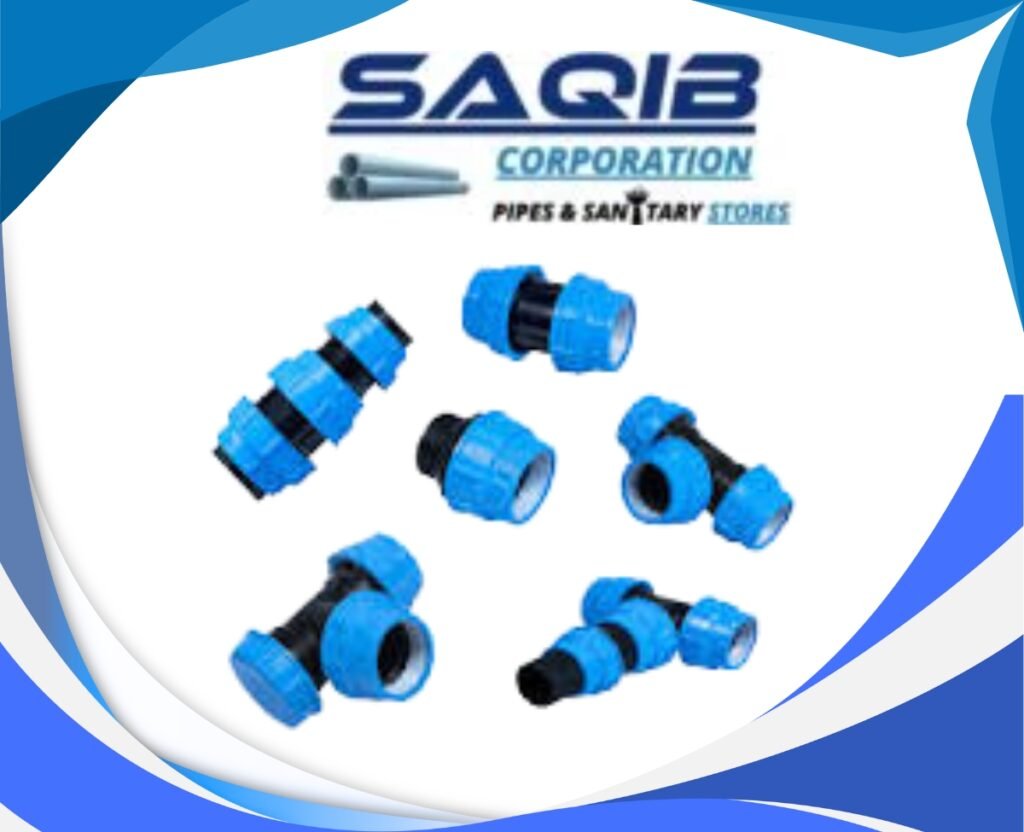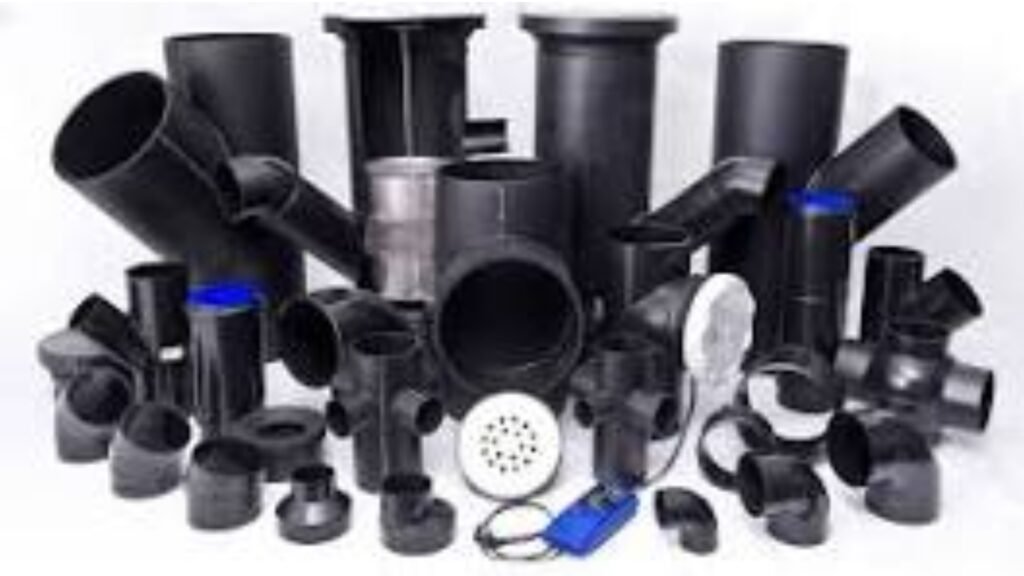HDPE pipes, made from high-density polyethylene, are widely known for their strength and versatility. They efficiently transport water, gases, and other fluids in various industries. Their smooth inner surface ensures a steady and uninterrupted flow.
Researchers emphasize their long lifespan, reduced leakage, and lower maintenance requirements. Analysts note their adaptability in different environments, including harsh weather and dynamic soils. Previous reviews also stress the economic benefits over time, despite higher initial costs.
Imagine a piping system that bends without breaking, resists wear and tear, and lasts decades. That’s the promise of HDPE pipes. With rising demand for eco-friendly and efficient solutions, they lead the way in innovation. Their unmatched flexibility and reliability set them apart from conventional options, making them a game-changer in the plumbing industry. This guide explores everything you need to know about HDPE pipes and plumbing fittings. You’ll learn about their composition, benefits, common uses, and the types of fittings available to suit various needs.
What Are HDPE Pipes?
HDPE, or High-Density Polyethylene, is created through the polymerization of ethylene, yielding a material with high density and excellent tensile strength. HDPE pipes have a smooth interior and exterior surface, making them highly efficient for fluid transport.
Key Characteristics
Durability
HDPE pipes can withstand harsh environmental conditions, including extreme temperatures and chemical exposure.
Lightweight
Although rigid and robust, HDPE pipes are light in comparison to metal pipes. This reduces transportation and installation costs.
Longevity
Properly installed HDPE pipes have a life expectancy of 50 to 100 years, depending on usage and environmental factors.
Applications
HDPE pipes are widely used for:
- Potable water systems
- Stormwater drainage
- Industrial fluid transport
- Gas distribution
- Irrigation and agricultural systems

Advantages of HDPE Pipes
The advantages of HDPE pipes explain their dominance in various sectors.
Corrosion Resistance
This makes them ideal for water and gas transport, where contamination prevention is critical.
Leak-Free Joints
HDPE pipes use heat fusion to create seamless joints.
Flexibility
HDPE pipes can bend without breaking. This is especially useful in areas prone to earthquakes or shifting soil. The flexibility reduces fitting requirements.
High Impact Resistance
HDPE pipes withstand external stresses and impacts, even in low-temperature environments. This resilience keeps systems operational under challenging conditions.
Eco-Friendly
Manufactured from recyclable PE material, HDPE pipes are an environmentally sustainable choice. At the end of their lifecycle, they can be repurposed, reducing landfill waste.
Low Maintenance
The lifespan of HDPE pipes, combined with their resistance to scale and chemical deposition, lowers long-term repair and maintenance costs.
Types of HDPE Pipes
Choosing the right pipe size and type is vital for effective system performance.
Classifications by Size
HDPE pipes are available in multiple diameters to serve various applications:
- Small Diameter (20 200 mm): Used for household plumbing and irrigation.
- Medium Diameter (200 mm-500 mm): Suitable for municipal water distribution and drainage.
- Large Diameter (500mm-1600mm+): Designed for industrial and stormwater systems.
Larger diameters are suitable for projects demanding high volumes of fluid transport.
Classifications by Thickness
The pipe wall thickness dictates its pressure capacity. This is classified as a Standard Dimension Ratio (SDR):
- Lower SDR values indicate thicker walls and higher pressure-handling capacity.
- For example, SDR 11 pipes endure higher pressures than SDR 26 pipes.
Customizations
These pipes are available with color coding, UV resistance, and additives to meet project-specific requirements.
HDPE Pipe Fittings
HDPE plumbing systems rely on a range of fittings to ensure seamless connectivity. These fittings accommodate directional changes, pipe reductions, and terminations.
Types of Fittings
Elbows
Allows for directional changes at 45° or 90° angles.
Tees
Divides or combines fluid flow into other pipes.
Reducers
Connects pipes of varying diameters.
Couplings
Joins two pipes securely.
End Caps
Seals the pipe to close off a system.
Installation Methods
HDPE fittings are joined through methods such as:
- Electrofusion: Uses a specialized fitting with embedded electrical elements to create a bond.
- Compression Fittings: Perfect for temporary or non-permanent setups.
The choice of fitting and installation method depends on the pipe’s purpose, site limitations, and pressure requirements.
Applications of HDPE Pipes in Plumbing
HDPE pipes are versatile and feature prominently in the following sectors:
Water Distribution
HDPE pipes deliver potable water with no risk of chemical leaching. Municipalities use HDPE because it minimizes water loss.
Wastewater Management
HDPE pipes direct wastewater efficiently. Their corrosion resistance ensures durability in sewer systems.
Industrial Fluid Transport
From chemicals to slurries, HDPE pipes handle a variety of industrial materials. Their non-reactivity protects the contents.
Stormwater Drainage
Large-diameter HDPE pipes can handle excessive rainwater, preventing urban flooding.
Agricultural Irrigation
Farmers rely on HDPE pipes for irrigation systems. Their lightweight and longevity make them cost-effective.
Marine Applications
HDPE pipes are resistant to saltwater corrosion.
Innovations in HDPE Pipe Technology
Advances in HDPE manufacturing improve durability, sustainability, and efficiency.
Enhanced Materials
Reinforced HDPE pipes withstand higher pressures.
Smart Piping Systems
The integration of monitoring sensors allows for real-time data on flow rates and leak detection.
Fusion Technology
This prevents failures in high-pressure systems.
Eco-Friendly Production
HDPE pipes are now manufactured with reduced energy consumption.
Benefits Of Traditional Materials
- Lightweight compared to steel, leading to easier transport.
- Non-corrosive, unlike galvanized pipe systems.
- Flexible, reducing cracking and leaks caused by rigid systems.
- Lower frictional losses, improving flow efficiency as compared to concrete pipes.
Municipalities, industries, and contractors are increasingly selecting HDPE pipes to build cost-effective, long-lasting systems.
Maintenance and Best Practices
While HDPE pipes require minimal maintenance, adopting best practices ensures efficiency and longevity:
- Regular Inspections: Prevent damage by identifying early signs of wear during routine checks.
- Proper Installation: Follow manufacturer recommendations for pipe jointing methods.
- Cleaning Systems: Periodically flush systems to remove debris buildup.
- Avoid Mechanical Stress: Support pipes to prevent sagging, particularly in above-ground installations.
Properly maintained HDPE systems are long-lasting and resilient, ensuring excellent return on investment.
Conclusion
HDPE pipes are redefining the standards of modern plumbing and fluid transport infrastructure. Their unparalleled durability, flexibility, and efficiency make them an ideal choice across industries. If you’re considering a piping system upgrade, HDPE offers a reliable and long-lasting solution. Its environmental benefits and reduced maintenance needs make it both a practical and sustainable choice. Investing in HDPE piping will future-proof your systems, ensuring they meet performance demands for decades to come.

